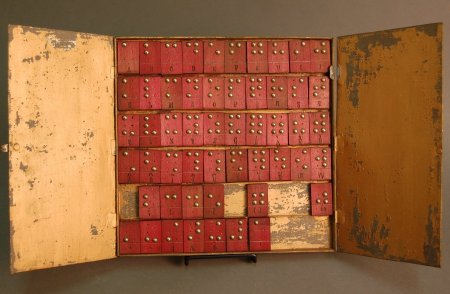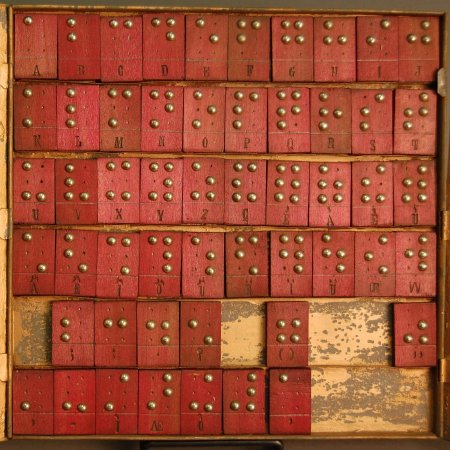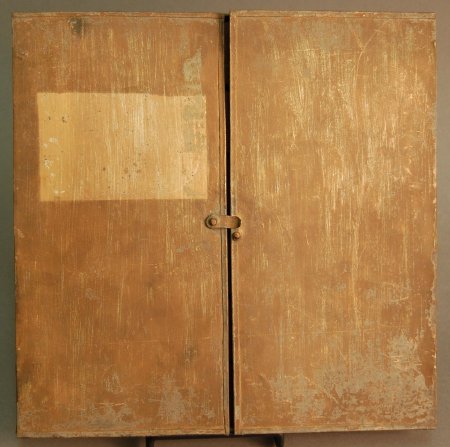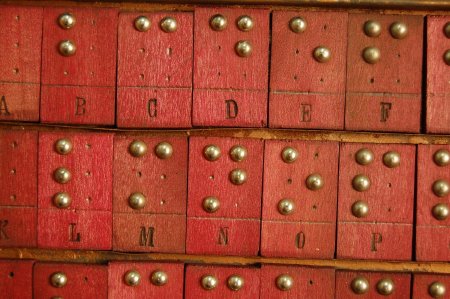Object ID:
2017.11
Title:
Early braille teaching tiles
Description:
Square tinplate case; painted gold on top, sides, and interior but not the bottom; two hinged doors on top with a swiveling catch in middle; five low shelves soldered in interior create six rows which hold fifty-nine braille teaching tiles; the tiles are wood rectangles, 1.625 x 1 x .25", stained a deep red, each with a braille symbol above an incised line, and a print symbol stamped into the wood below the line; the braille symbols are formed by a 6mm diameter nickel-plated-brass pin in the positive dots and an incised dot in the absent dots; first four rows cover the alphabet and accented vowels, row five is punctuation, row six is supplementary symbols. Note the set is missing the tiles for the comma, exclamation mark, open quote, asterisk, and capital letter but includes extra tiles for the letters A,G,L,M.P.
Dimensions:
H-10.625 W-10.75 D-0.5 inches
Made by:
Méricant, Louis
Place of Origin:
Toulouse, France
Provenance:
The Musee Valentin Hauy in Paris France has a virtually identical set signed by Louis Méricant (1830-circa 1902). Méricant was a sculptor, woodworker, and teacher in Toulouse, France, who was an early champion of the braille code and invented several different tools to help teach braille to students and teachers at the l’Institut des Jeunes Aveugles de Toulouse, founded in 1866. He called this set the "Mobile Alphabet" and marketed it for younger children. Louis Braille originally published his system in 1829, but this set of teaching tiles reflects the French Braille Code as published in his second edition in 1837. The code is slightly different from modern French Braille, switching the symbols for parentheses and quotes.
Credit Line:
Museum Purchase, 2017.11.



